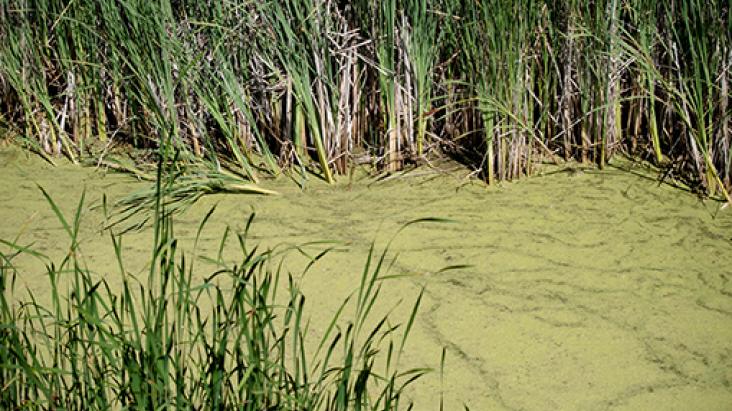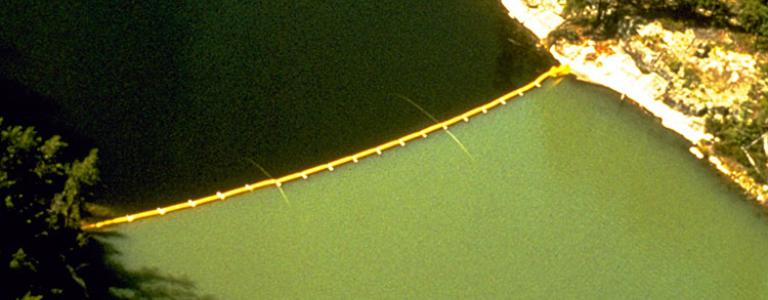Exploring Harmful Algal Blooms
The longest-running experiment at IISD Experimental Lakes Area has involved adding phosphorus and nitrogen to a lake since 1968 to study nutrient contributions to algal blooms.
Researching the effects of nutrients on algal blooms and phytoplankton in lakes was the reason that the research site was founded back in 1968. It found that phosphorus is the main factor in algal growth.
Since 1990, no nitrogen has been added to this lake (Lake 227), but we have continued to add phosphorus. Despite the absence of artificial nitrogen inputs, algal blooms have not diminished. This and other studies have demonstrated that phosphorus control is highly important to limit algal blooms.
This research project has also supported multiple studies on nutrient and contaminant cycling. For example, in 2017 we started a research project to explore the potential role of iron in affecting harmful algal blooms.
In 2019, we also started intentionally eutrophying two lakes (a process that will take about two years) so we can determine the necessary preconditions for harmful algal blooms—all with the ultimate goal of targeting one factor per lake to reduce and prevent these blooms from occurring.
This research has been developed and carried out in collaboration with multiple researchers across Canada including the universities of Waterloo, York, Wilfrid Laurier, Toronto, and New Brunswick.
What Are Algal Blooms and Why Do They Matter?
Algal blooms on lakes are unsightly and can be toxic. Want to know what they are and how we can help combat them?
Reducing How Much Nitrogen Enters a Lake Has Little Impact on Algal Blooms, Find Canadian Scientists
Lakes suffering from harmful algal blooms may not respond to reduced, or even discontinued, artificial nitrogen loading. Many blue-green algae responsible for algal blooms can fix atmospheric nitrogen dissolved in the water, and therefore water stewards should focus their efforts on removing phosphorus from lakes to combat algal blooms.

Canada could take inspiration from U.S. policy preventing algal blooms
Recent US legislation to combat algal blooms and protect fresh water shows bipartisan environmental action is still possible—and sets an example for other countries.
Latest
You might also be interested in
IISD Experimental Lakes Area
Featuring a collection of 58 small lakes and their watersheds in Northwestern Ontario, Canada, IISD Experimental Lakes Area is one of the world’s most influential freshwater research facilities.
AquaHacking Lake Winnipeg
We are challenging young innovators to team up and develop new and innovative solutions to tackle urgent freshwater issues.
Discovering What Oil Spills Do to Fresh Water
Groundbreaking new research into the impacts of diluted bitumen on fresh water systems.
Fish Forward: Protecting Manitoba's fishery way of life
Join us in protecting Manitoba's fishery way of life.



